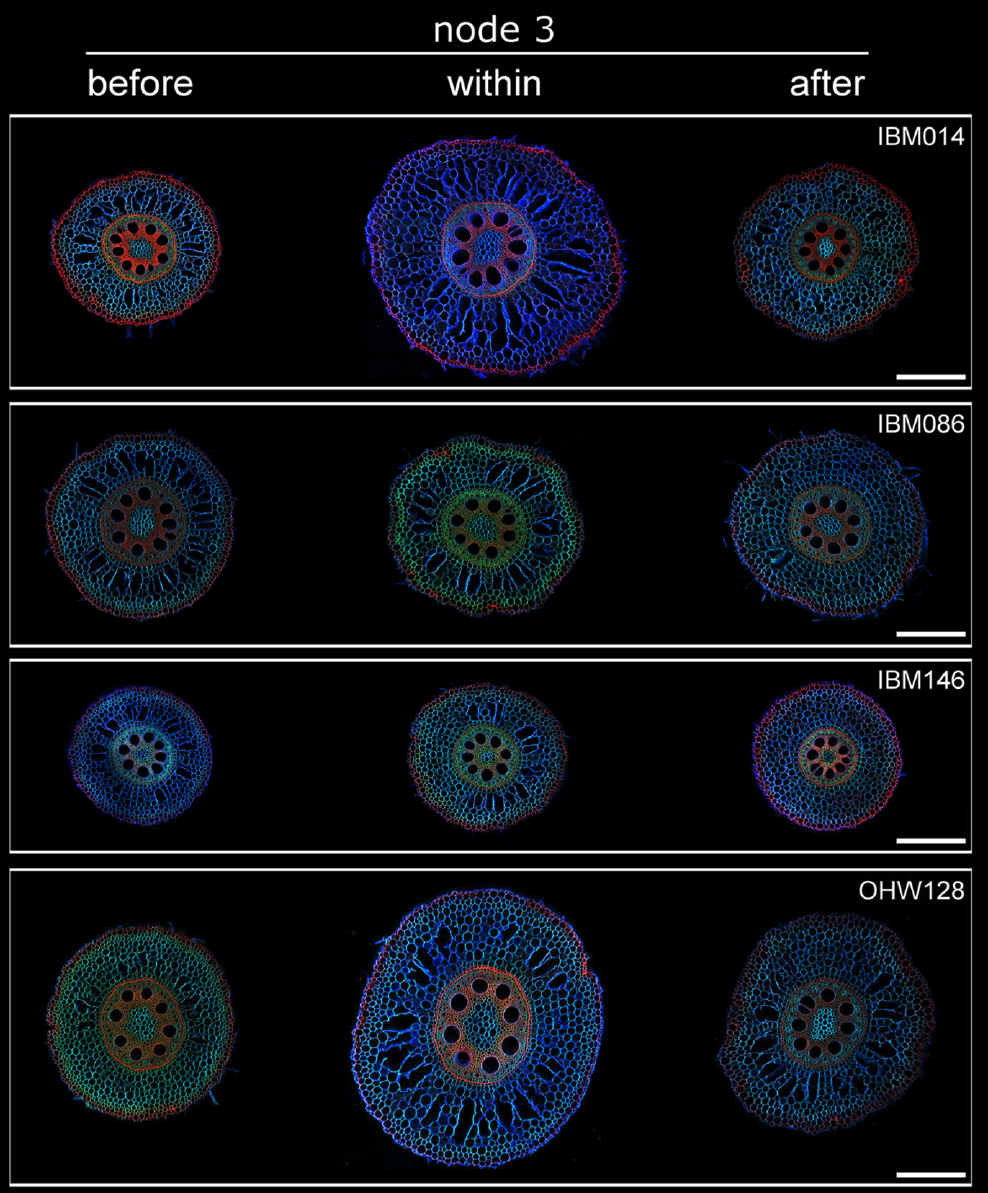
rmaize roots passing through a contacted soil layer
Authors
Dorien J. Vanhees, Hannah M. Schneider, Jagdeep Singh Sidhu, Kenneth W. Loades, A. Glyn Bengough, Malcolm J. Bennett, Bipin K. Pandey, Kathleen M. Brown, Sacha J. Mooney, Jonathan P. Lynch
Source
Plant, Cell & Environment 2022 45:789-804 http://doi.org/10.1111/pce.14175
Download Options
open access
Abstract
Radial expansion is a classic response of roots to mechanical impedance that has generally been assumed to aid penetration. We analysed the response of maize nodal roots to impedance to test the hypothesis that radial expansion is not related to the ability of roots to cross a compacted soil layer. Genotypes varied in their ability to cross the compacted layer, and those with a steeper approach to the compacted layer or less radial expansion in the compacted layer were more likely to cross the layer and achieve greater depth. Root radial expansion was due to cortical cell size expansion, while cortical cell file number remained constant. Genotypes and nodal root classes that exhibited radial expansion in the compacted soil layer generally also thickened in response to exogenous ethylene in hydroponic culture, i.e. radial expansion in response to ethylene was correlated with the thickening response to impedance in soil. We propose that ethylene insensitive roots, i.e. those that do not thicken and are able to overcome impedance, have a competitive advantage under mechanically impeded conditions as they can maintain their elongation rates. We suggest that prolonged exposure to ethylene could function as a stop signal for axial root growth.

